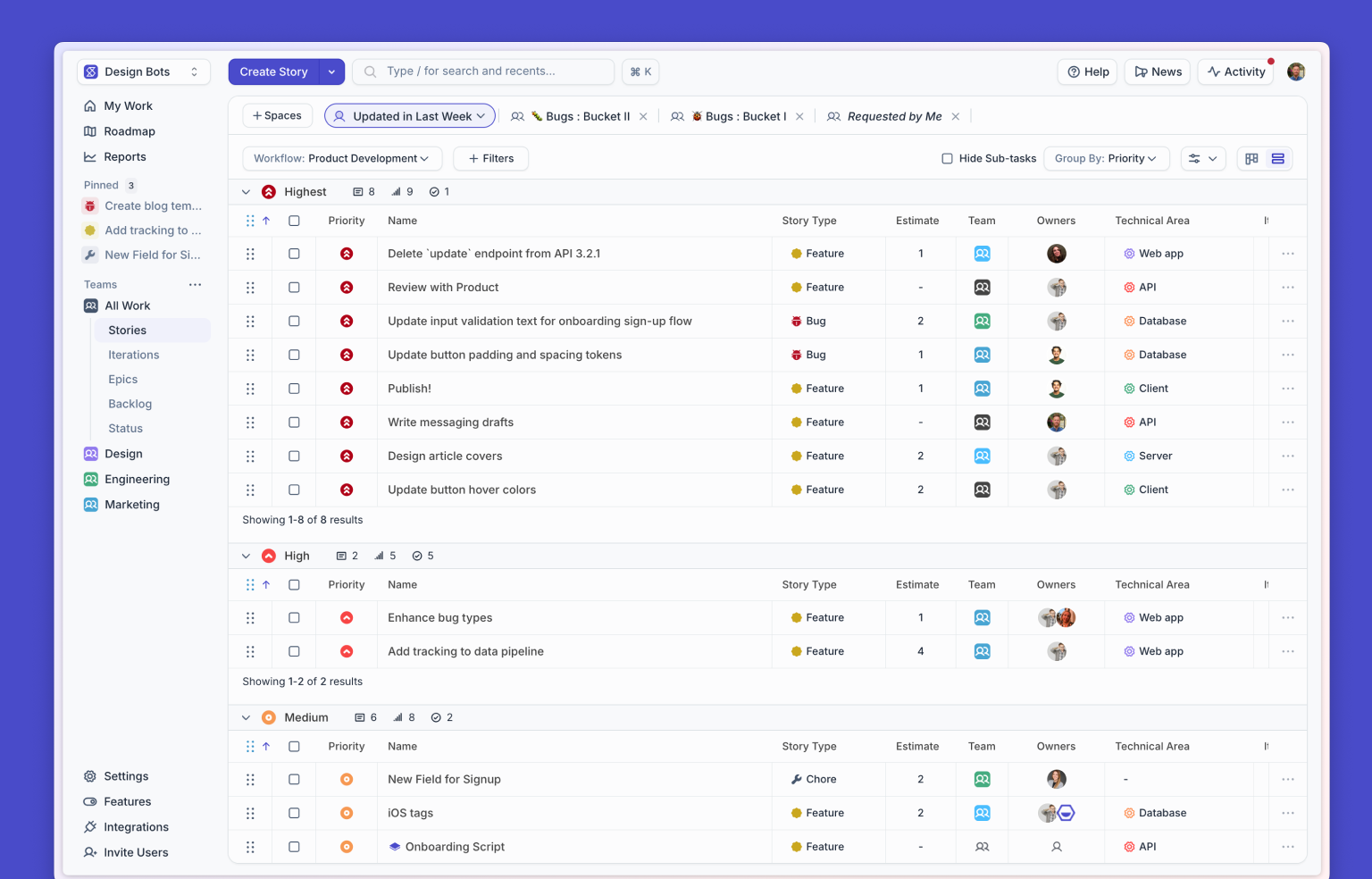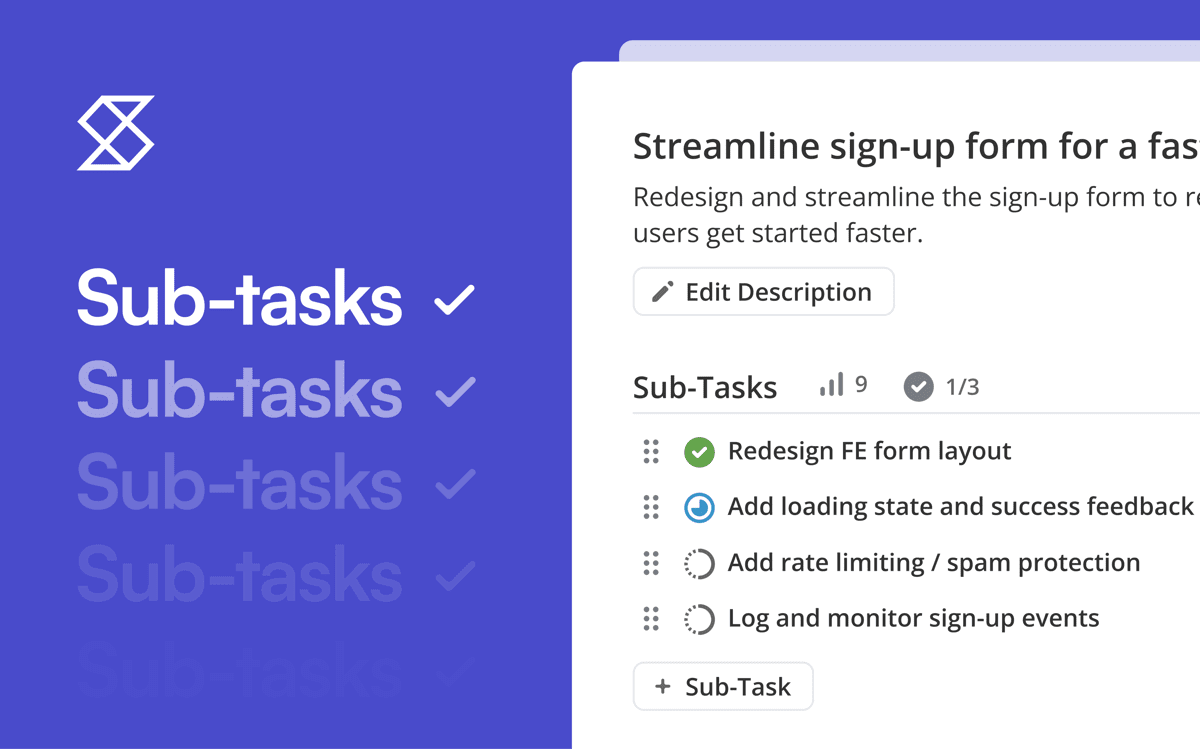Management, tracking, projects, tasks, issues… If you have a job - you know, that thing you do for money? Maybe probably from your couch some of the time, or maybe all of the time? - you might be tired of hearing these words, because they get thrown around a lot in workplaces and fake workplaces, like your living room.
But what does it all MEAN? This is life’s ultimate question, so it makes sense that it would also apply to task management, issue tracking, project management, and product management: what is the POINT?
Thankfully, software tools don’t have to be mysterious, like life. There are, in fact, definitive answers when it comes to questions such as: how is task management different from issue tracking, and what is the difference between project management and product management?
Let’s take a closer look. Stick with me here. Because what else are you doing? Working?
Task Management Tools
Core Unit of Work: Task
Task management tools are built primarily for individuals, agencies, and consultants that work with clients on short-lived, often one-off projects which require mostly granular - you guessed it - task-based work. Asana or Basecamp are good examples of task management tools.
At agencies, things are typically more chaotic and hectic, with an expectation to churn through tasks that are thrown over by the client. Work doesn’t necessarily move through a structured process, because each client usually requires their own unique processes and each client has specific demands, and the roster of clients at any given moment is always changing, so everything is in flux. For this reason, time tracking is more important with task management tools.
The core unit of work is a Task, which doesn’t move through much of a workflow. It often just needs to be checked off a list.
That’s task management. Check.
Issue Tracking Tools
Core Unit of Work: Ticket, or Issue
Issue tracking tools provide a way for engineers to triage and process issues that appear in a software project. Traditionally used for engineering-led projects, issue tracking tools are historically built by engineers for engineers - often to such a degree that it alienates non-engineers.
GitHub Issues, Jira, and Fogbugz are great examples of straight-up Issue Tracking tools.
Issue tracking focuses on triaging a firehose of - you guessed it again, you’re on fire - issues that continually pour in. The core unit of work is called an - yes, you’re right again - Issue or a Ticket.
The main thing to understand about Issue Trackers is that hierarchy is bolted on later - it wasn’t designed to roll up to, or display, or track progress on larger initiatives.
Dying to track issues this year? Check out the top issue tracking systems of 2022.
Project Management
Core Unit of Work: Story, Feature, Card, Epic, or Milestone
Project management is a more general product category that spans issue tracking, task management, and product management. Examples include Shortcut (hey!) and Pivotal Tracker.
As opposed to issue tracking-only tools, which focus mainly on issue triage, Project Management software is designed to let you describe and connect a full hierarchy of work together, from the low-level granular tasks all the way up to big monthly or quarterly initiatives. Quarterly initiatives - classic business stuff.
The core unit of work is typically a Story, Feature, or Card, but they often bubble into larger units of work such as Epics or Milestones.
Project management software allows multidisciplinary software teams to collaborate together in the same tool: everyone from engineers, designers, product managers, marketers, success, and support.
It’s for everyone who helps make a software business hum. This is your cue to start humming. Hum anything!
Product Management Tools
Core Unit of Work: Roadmap
Product management tools are more about understanding “the why”, user problems, customer journeys, and the steps taken before the actual building.
Examples of Product Management tools include Productboard, ProdPad, and Product Plan.
Product Management tools are typically used by product teams as their own single source of truth - which also can mean that Product, Design, and Engineering often end up with their own single sources of truth, which require configuring integrations between them to keep them in sync. This means there are multiple sources of truth, and different truths start flying around everywhere, much like life.
So, there you have it: task management, issue tracking, project management, and product management demystified. To visualize what your all-around single source of truth could look like, not only for your software team but for your entire software company, sign up for a free trial of Shortcut.

















%20(788%20x%20492%20px)%20(1).png)
.png)

